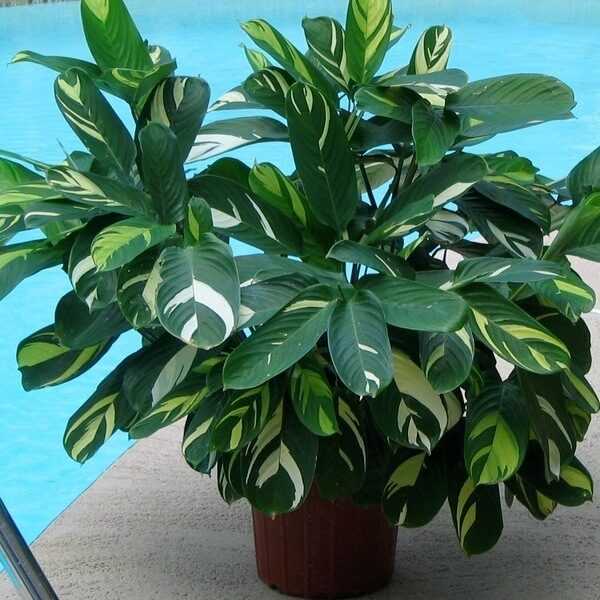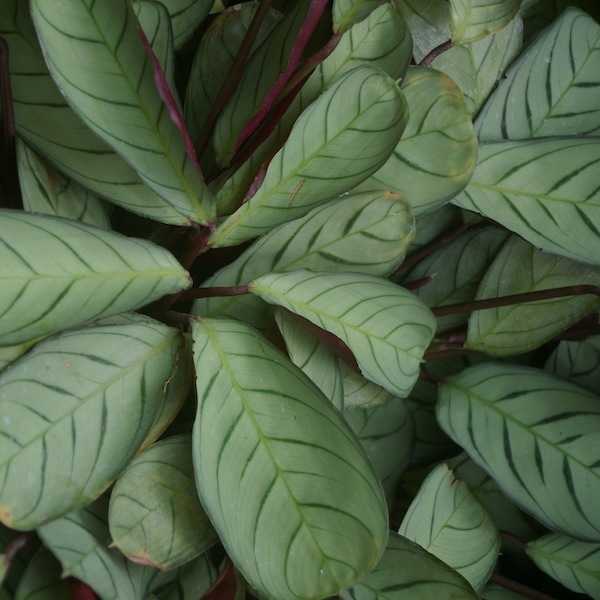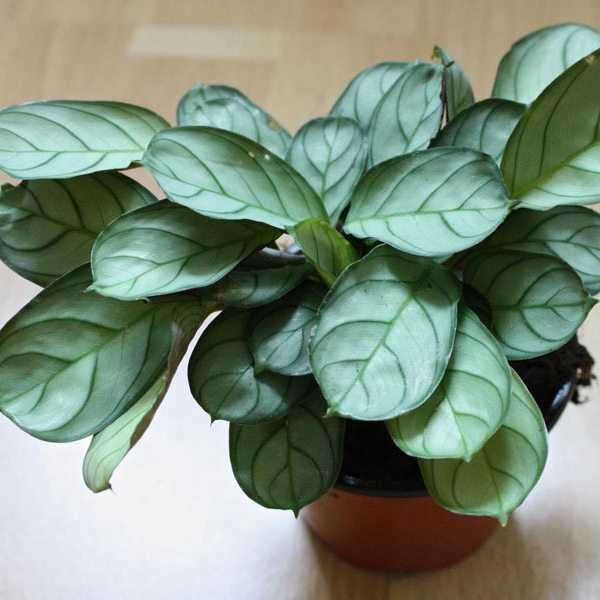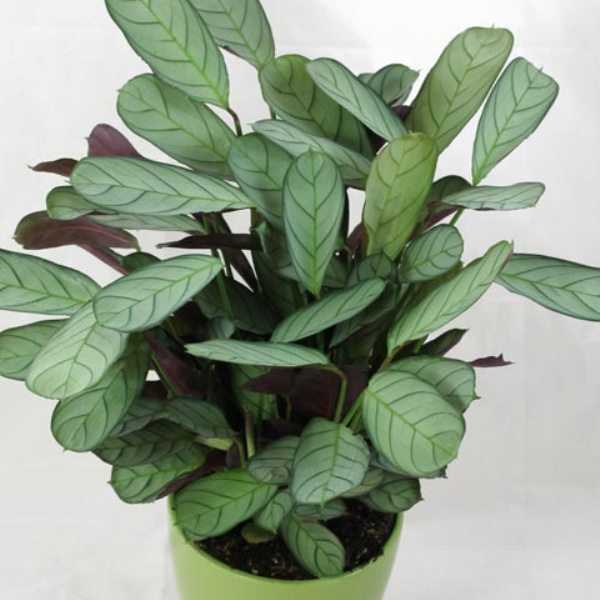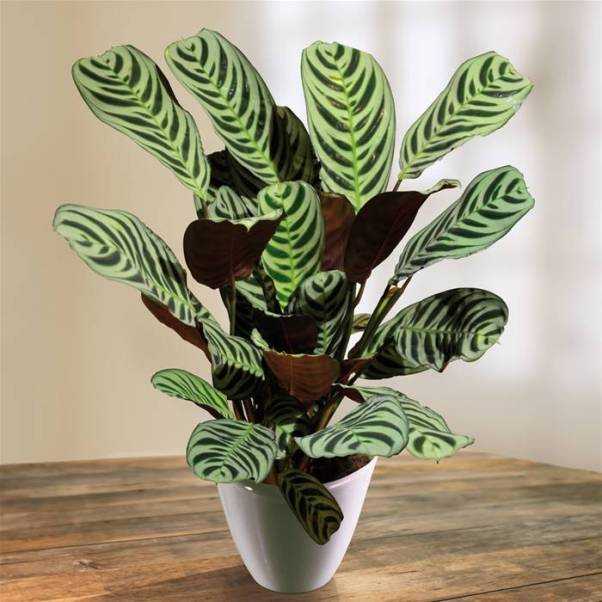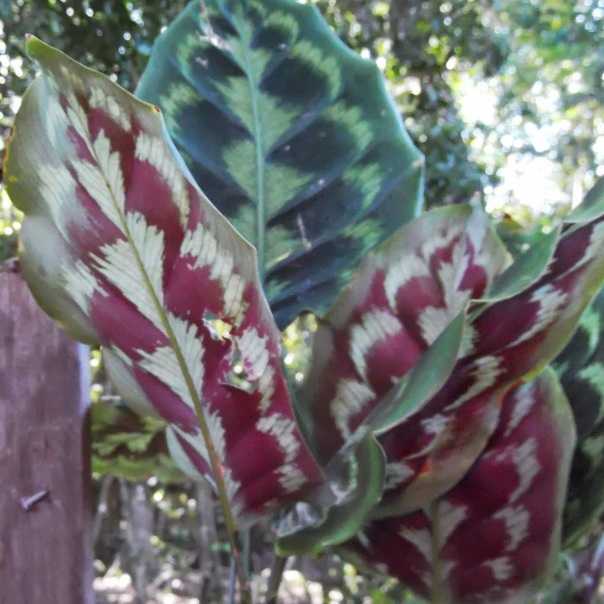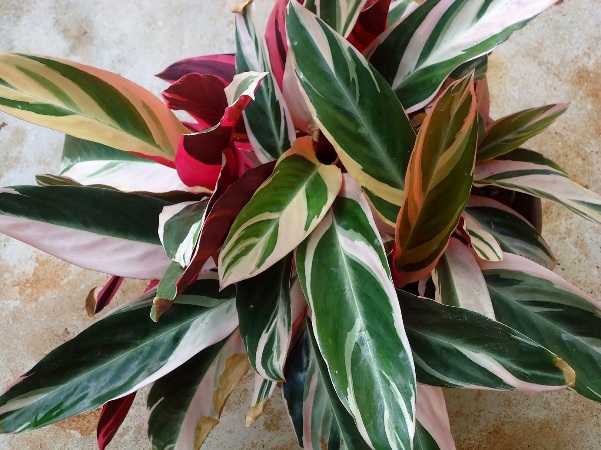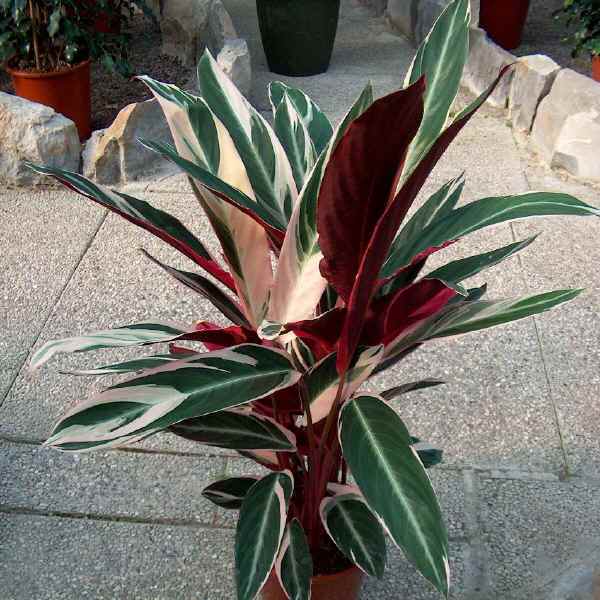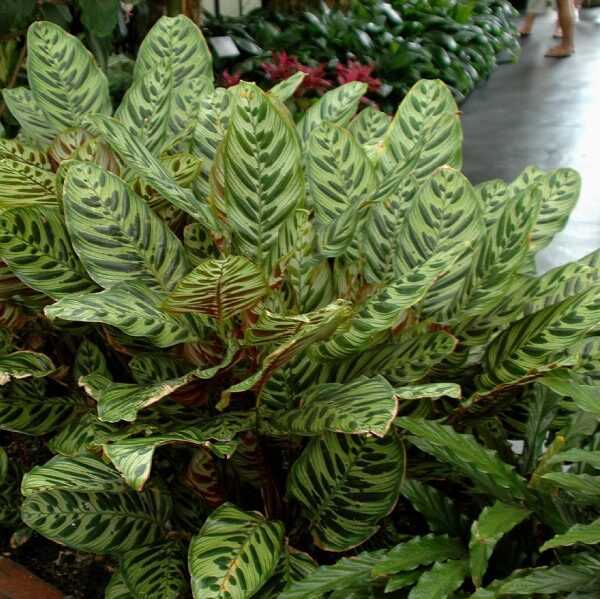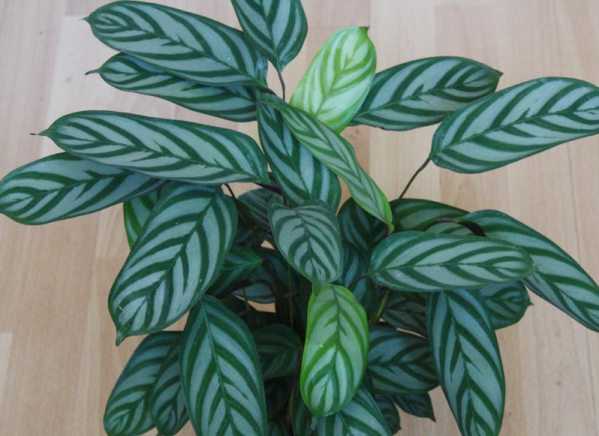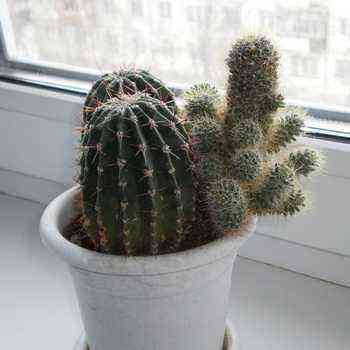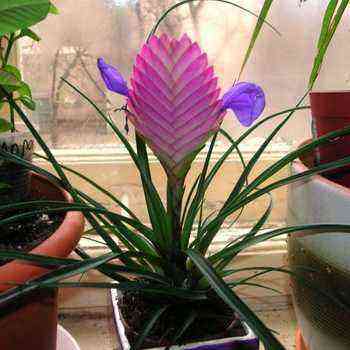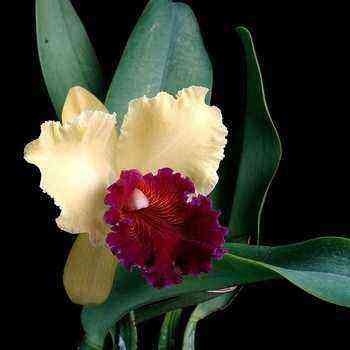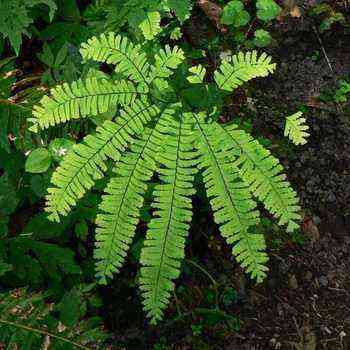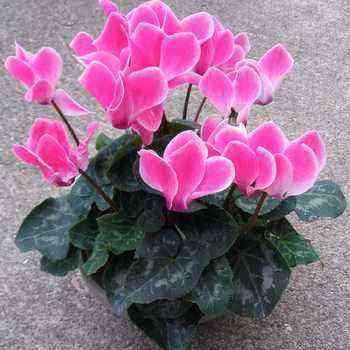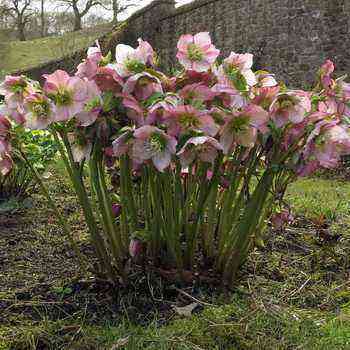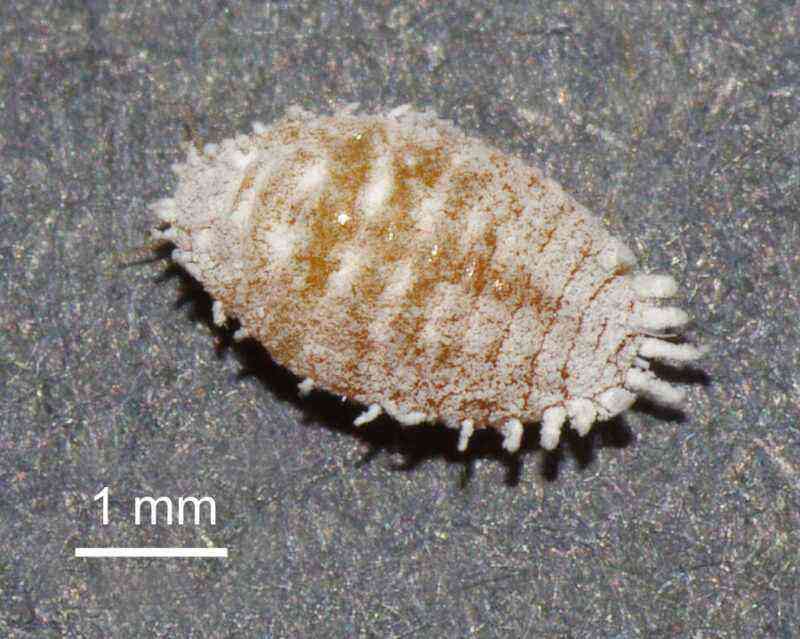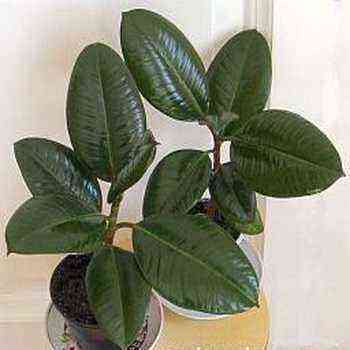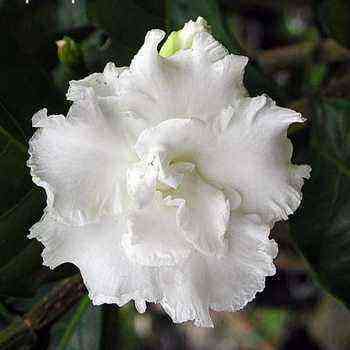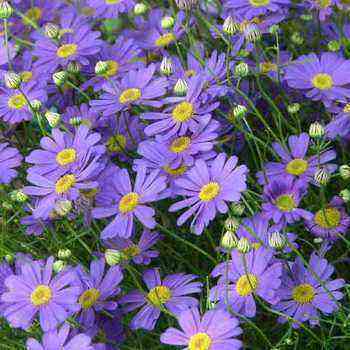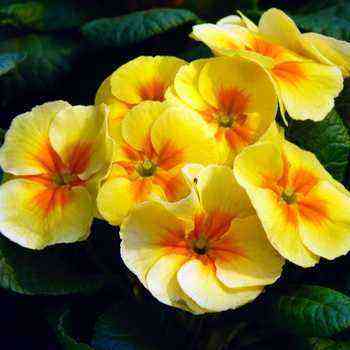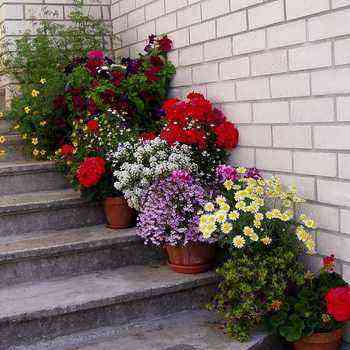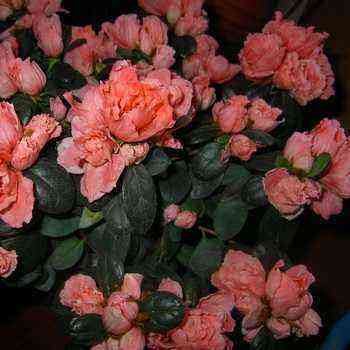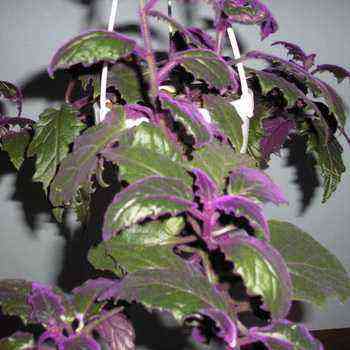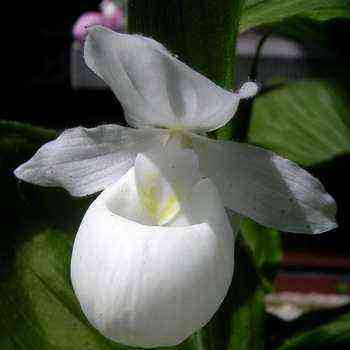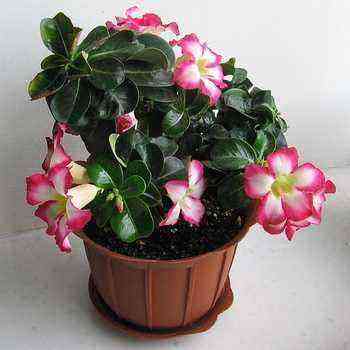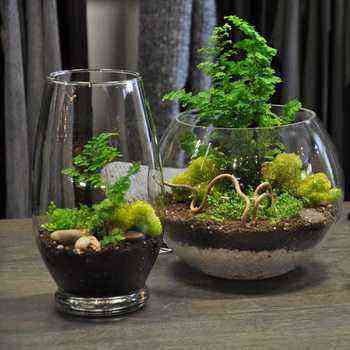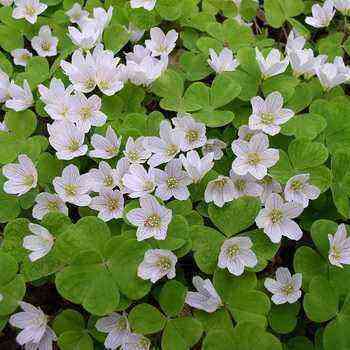Ktenanta is a genus of flowering evergreens of the Maranta family, native to Brazil. Gardeners grow them in their gardens because of their attractive, variegated foliage. Translated from the Greek ktenant – “comb flower”. She received this name because of the unevenly placed leaves on the stem, creating just such an effect.
Landscape designers and simply lovers of growing flowers on the windowsill adore the ktenant flower for its colorful and variegated leaves, which can become a real decoration for your home and office.
Description of the tenant and her photo
Ktenanta reaches two meters and bears huge thirty-centimeter leaves in the shape of an oval. They most often have a yellowish-green tint with large stripes over the entire area. This is a very interesting flower – in the evening, its leaves gather at the base, and with the first rays of the sun they bloom again: thus, a rustle is created from them, they seem to come to life. Quite often, the foliage of the ktenanta is very close to each other (due to small internodes) – as a result, the illusion of a bush tucked into a bunch is produced. This is a general description of the plant, more detailed information about the plant is presented in the description of individual species. Also offered are photo ktenants in various angles and periods of development.
It is constantly confused with one of the varieties of the Marantov family – calathea. Scientists have not been able to fully divide these two species, so it is not surprising that there is still confusion about the name of one of the varieties. It’s okay if suddenly in the store instead of ktenants they sell you calathea – the rules of care and growth are similar for them, so there will be no problems.
Unfortunately, the flowers of the ktenants are absolutely nondescript and do not attract attention at all. They create an inflorescence in the form of an ear and a ridge.
Planting and caring for a ktenant at home
In the natural environment, the ktenanta usually grows in a swampy area under the wing of the tropical trees of Brazil. Therefore, in order for the plant to normally take root in unfamiliar weather and natural conditions, you should carefully know the rules for caring for a flower in a growing room in a room and follow them. And it is very easy to do this, because the ktenanta is an unpretentious and calm plant, so even beginners can cope with it. Caring for a ktenant at home is quite simple and does not require specific knowledge of the botanical characteristics of this plant.
Ktenanta calmly tolerates frosts, but not less than 13 degrees. If you live in a region not with the warmest climate, then a greenhouse and planting in the temperature conditions of the room, in a warm place, can serve as an alternative.
Caring for a ktenant at home begins with the correct choice of the appropriate type of potting soil for planting it. Without normal, well-drained soil, the ktenant flower will begin to die before your very eyes, so be concerned about leaking liquid through the soil you choose. You also need to know that the place you choose for the future plant must certainly be in the shade – otherwise, all the foliage will simply be burned out.
In the room, it is necessary to maintain a constant level of humidity and temperature, while not forgetting to constantly spray the leaves with settled or cool water throughout the day. During winter, the amount of watering should be reduced, as well as the amount of spraying. Watering the flower should be done only after the ground underneath is dry.
The temperature in the room where the ktenant is kept should not be less than 22-25 degrees in spring and summer (it is not scary if it is a little lower at night), and in winter – not less than 12. This will ensure the safety of your flower at all seasons of the year. the appearance of the foliage of the plant.
Ktenanta reproduces with the help of upper cuttings and separation of roots during transplantation. Each of the gardeners chooses his own method of planting ktenants, since both of them are quite fertile and give good results over time. After transplanting or planting new shoots, the young shoots should be fed with flower fertilizers every seven days, and in winter – once every one and a half months. The presence of calcium and nitrogen can most unpleasantly affect the condition and visual appearance of the flower.
It is worthwhile to carry out scheduled pruning once a year in order to remove all old and dying leaves from the ktenanty bush. Also, do not forget that a young flower needs to be transplanted annually, for an adult – the procedure can be repeated several times every two or three years.
Diseases ktenants
When growing ktenants, you will surely face some problems and diseases:
- if the stems are bent, it means that the flower is stored at a low temperature and a high level of humidity;
- if the bush began to grow slowly, and the foliage turns brown and dries up, then a possible reason here may be an infection with a spider mite or keeping the flower at too high a temperature;
- if the leaves curl and become covered with spots, then the flower does not have enough moisture. It is necessary to increase the amount of watering and make sure that the land is moist, but not damp;
- if the leaves acquire a yellowish-brown hue, this means that the soil is lacking in nutrients and minerals, or they are in excess there;
- if the leaves have lost their picturesque color and began to dry out, it means that they are in a place with intense lighting;
- if the foliage falls off, it may mean that the air in the room is too dry, or the watering was too abundant.
These are the main diseases of ktenants that can be successfully dealt with at home.
Types of ktenants
The cultivation of ornamental deciduous plants at home requires a careful study of the agrotechnical characteristics of not only types, but also varieties of any indoor flower. There are different types of ktenants, brief descriptions of which are presented later on this page. We also suggest that you familiarize yourself with the photo of ktenants of various species and varieties in order to be able to choose the most suitable plant for yourself:
Ktenant Oppenheim
Ktenanta Oppenheim is also referred to as the giant bamboo and is also a member of the Maracantov family, originally from Brazil. From this species was produced the decorative variety “Tricolor” with picturesque and varied foliage colors. A similar flower can grow up to 40-50 centimeters long.
Ktenanta Oppenheim is more hardy than the rest of the family. They easily tolerate varying degrees of aridity and low humidity. Some of the leaves are very thick and dense and grow to enormous proportions. Usually it has a gray-green or just a gray shade with stripes throughout the area.
Ktenanta Burle-Marksi
Ktenanta Burle Marksi is a stunning low-growing plant (probably the smallest in the family and genus) with unusual colored leaves that are always sharply different from the rest of the flowers. This variety was first discovered by the Brazilian landscape designer Roberto Burle-Marx. It has been known for half a century, but it was first described only in the 90s of the 20th century.
The typical ktenanta burle-marxi has thick, rectangular, silvery-gray leaves. This plant is great for shade cover. At the same time, it always looks flawless and will be a good decoration for your garden. It is able to grow on the ground over fairly large areas.
The variety of Ktenant Burle Marksi Obscura differs in the area of leaves (they are slightly smaller) and their color: green with places of indeterminate shape of a dark green shade.
There is another variety of the Burle-Marksi variety – Amagris. It was obtained by mutating tissues of the main species – the procedure, by the way, was carried out in Belgium. The flower is distinguished from others by gray leaves with light green veins. As a result, a silvery-gray shade is dominant on the bush as a whole.
There is another dwarf mutation of this variety, but the truth is that it has no name yet.
Ktenant Lubbers
Ktenanta Lubbers is the most commercially successful species of ktenant. In addition, the variegated flower shapes have attracted the attention of gardeners and designers around the world for more than half a century. It attracts them with its lush, rich green color, which persists even when grown in dark places.
The trunk, on which the shiny green leaves in the shape of a rectangle grow, can grow up to 1,5 meters. Some of them have a layered effect due to the unusual placement of the leaves.
The most popular varieties “Golden Mosaic” and “Variegata”
“Golden Mosaic” has a slash on the leaves and spots of a creamy yellow hue, which seemed to be splashed on them by someone.
“Variegata” has subtle golden patterns on its leaves, which are mainly placed on the veins of the flower. It is a very thin and complex plant in structure.
Ktenanta compressed
Ktenanta compressed is a fairly well-known shrub for gardeners, it was known back in the 1960s. Unlike the rest of the species examined, it has huge bright green leaves. It is a very patient and hardy plant – it easily tolerates dry soil and lack of sun. Ktenanta squeezed provides a wonderful lush backdrop in your garden for the rest of the flowers.
Ktenanta cetosis
Ktenanta cetosa is another tough nut to crack in the Ktenant family. It can grow up to one meter in length along with the dark green and gray foliage, which is purple at the bottom.
The name comes from the word bristly or hairy. This is one of the most energetic species of ktenants. It is capable of doubling in size after the rainy season, so additional space will need to be provided.
